The Renault Duster, with its tough construction, practical interiors, solid diesel engine and car-like driving manners packed into a compact yet muscular package, pioneered the mid-size SUV segment back in 2012. Not only did the Duster drive Renault India’s sales and help establish brand Renault in India, but it also built quite a fan base for its sheer touring capability. Moreover, its all-wheel-drive option placed the Duster in a league of its own.
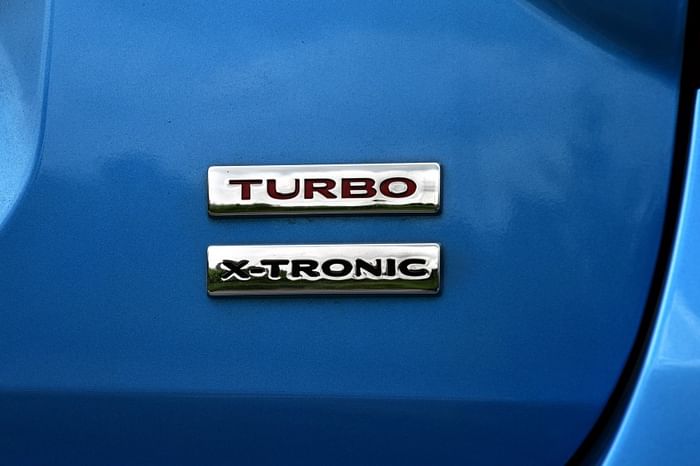
Naturally, the segment grew, with many joining in, and today, faced with newer competition, the Duster has been relegated to the sidelines. Furthermore, with the advent of BS6 emissions norms, Renault dropped the 1.5-litre K9K diesel engine – a Duster strong point – and offered only a 1.5-litre naturally aspirated (NA) petrol engine with a 5-speed manual gearbox. So, can the addition of the new and powerful turbo-petrol bring back interest in the Duster?
What’s it like to drive?
Co-developed by the Renault-Nissan-Mitsubishi alliance and Daimler, this 1.3-litre, four-cylinder turbocharged petrol engine is sold in different states of tune across the world, and not only does it power cars from the Alliance, it also does duty in some Mercedes-Benz models internationally. Withstate-of-the-art technologies like bore-spray coating, centrally-mounted six-hole injectors running at pressures as high as 250bar, an e-wastegate turbocharger and more, this motor has been engineered with a focus on low-rpm responsiveness.
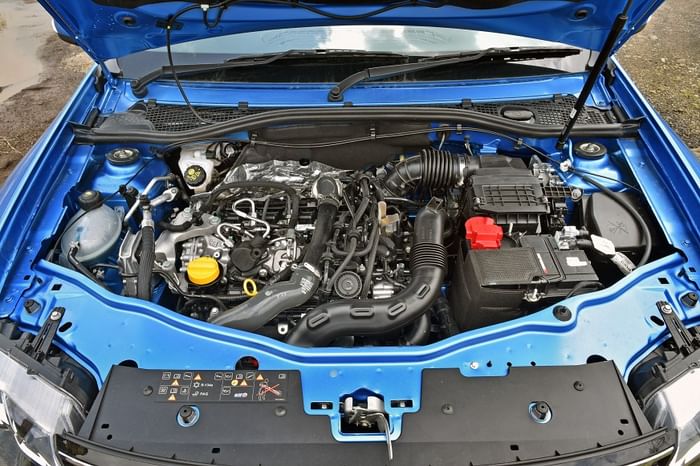
Shared with the Nissan Kicks in India, this unit makes 156hp and 254Nm, and the car we’re driving today is equipped with a CVT automatic. Twist the old-fashioned key (even without depressing the brake pedal) and this motor purrs to life and impresses with its refined and vibe-free character. Right from the get-go it feels smooth and relaxed, with good on-tap response. Power delivery is strong albeit linear, so it might not impress those looking for sudden bursts of torque-like in the punchy,1.5-litre K9K diesel, but performance on offer is aplenty, and the build-up of speed is simply effortless.
In free-flowing traffic, the long-travel accelerator pedal does require a heavier foot than usual to scoot past moving traffic though. It isn’t particularly free-revving either, and the CVT gearbox upshifts at a rather modest 5,500rpm under full throttle. And at higher revs, you can hear the engine thrumming, as well as some whine from the transmission, but it doesn’t get too loud or coarse.
A new addition to this Duster Turbo is the engine stop/start feature, which works well and rather seamlessly. Many would prefer to keep it off at all times, as it disengages the air-con compressor, but on some cool days, you could consider leaving it on.
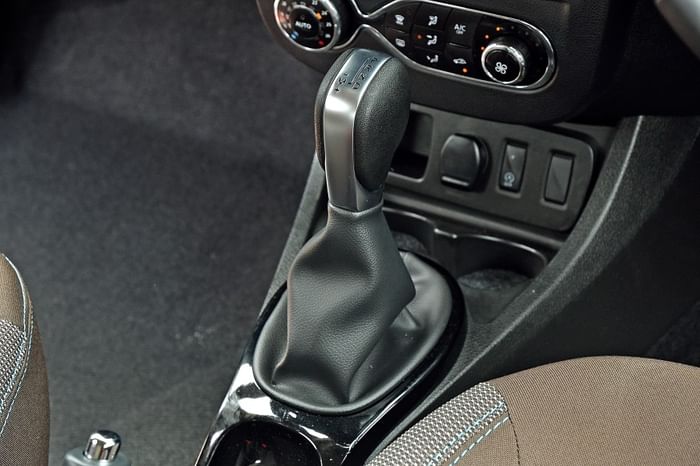
The 7-step CVT (continuously variable transmission) does a great job of transmitting power to the wheels smoothly and seamlessly. Occasionally, however, when slowing down to crawling speeds, the CVT tends to get a bit jerky while transitioning to the lowest step. There is a sequential manual function via the gear lever, simulating seven gear ratios, and rowing through the manual mode is particularly enjoyable, especially during a spirited drive. It responds quickly to taps, and it will even downshift aggressively when you require strong engine braking. However, paddle shifters, like in the Creta would have sweetened the drive experience.
Is the 2020 Duster Turbo the quickest mid-size automatic SUV?
The Duster turbo produces 16hp and 12Nm more than the Kia Seltos and the Hyundai Creta, both of which use a common 1.4-litre turbo-petrol engine that makes 140hp and 242Nm, mated to a 7-speed dual-clutch automatic transmission. In our tests, however, the Duster trailed the Seltos and Creta in the sprint to 100kph by 1.2 and 1.1 seconds respectively, and this gap further widened to over 5 seconds by the time these cars hit 140kph. Rolling sprints from 20-80kph and 40-100kph showed the same results, with the Koreans being marginally quicker each time. And interestingly, the Kia Seltos’ lower-spec, naturally aspirated, 115hp, 1.5-litre petrol CVT automatic is as quick as the Turbo Duster till 140kph, and is only a bit slower through the gears.
| 2020 Duster Turbo CVT vs rivals: Performance (as tested) | ||||
|---|---|---|---|---|
| Duster CVT | Seltos DCT | Creta DCT | Seltos CVT | |
| 0-20kph | 1.17s | 1.52s | 1.54s | 1.51s |
| 0-40kph | 2.67s | 2.86s | 2.71s | 3.41s |
| 0-60kph | 4.65s | 4.67s | 4.87s | 5.54s |
| 0-80kph | 7.29s | 6.96s | 7.16s | 8.33s |
| 0-100kph | 10.89s | 9.72s | 9.81s | 12.06s |
| 0-120kph | 16.13s | 13.65s | 13.61s | 16.97s |
| 0-140kph | 24.01s | 18.96s | 18.69s | 24.29s |
| 20-80kph (in kickdown) | 6.13s | 5.71s | 5.55s | 6.7s |
| 40-100kph (in kickdown) | 7.81s | 7.36s | 6.66s | 8.5s |
Is the 2020 Duster Turbo’s ride and handling as good as before?
We have always been fond of the Duster’s tough construction and its ability to smoothen out bad roads, and we’re happy to report this one retains those strengths. Bad and broken roads whose mere appearance can make its Korean rivals wince, are a piece of cake for the Duster which has an air of indestructibility and simply sails through without batting an eyelid. It remains nice to drive too and its high-speed manners and impressive grip give it a sense of surefootedness. Even its brakes play a huge role in boosting driver confidence. The hydraulic steering does offer decent feel and feedback, but it violently transfers road shocks and hard kicks back mid corner (a known flaw from the past), and this does dampen the drive experience.

What is new on the outside?
Renault gave the Duster a mid-life facelift in 2019 and this Turbo version carries forward the same styling. Unlike the Nissan Kicks Turbo, however, there are plenty of cosmetic bitsto distinguish the Turbo versionfrom its naturally aspirated (NA) petrol counterpart. There are splashes of red on the chrome grill, in the fog lamp housings and wheel centre caps, which instantly convey its sportier pretentions. The new, 17-inch ‘Forza’ diamond-cut wheels look stunning, especially when paired with this racy ‘Caspian Blue’ paint shade. The roof rails as well as the number plate applique get red Duster lettering, and while there isn’t much at the rear to speak of except a new ‘Turbo’ badge, for this update, Renault has ditched the quirky black tailgate vinylthat featured on the 2019 facelift.
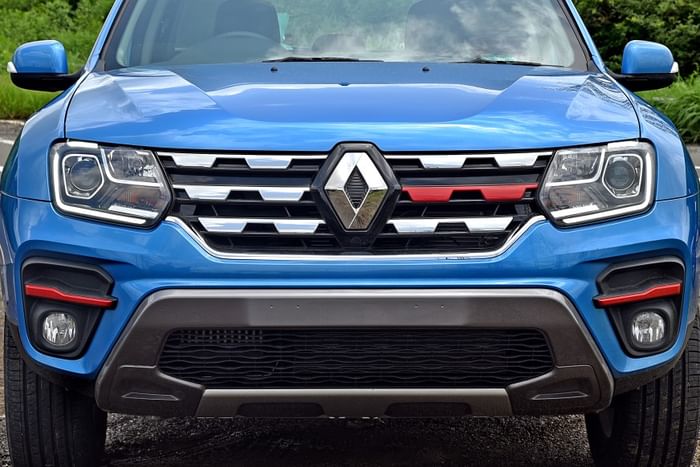
What is new inside the Duster Turbo’s cabin?
Changes to the interiors are even fewer than those on the outside. The notable addition here is the engine stop/start switch placed beside the front 12V power socket, and there is no Eco mode any more. The Duster’s interiors feel robust, the driving position is commanding, and the visibility all around is good. But when compared to its more modern rivals, the cabin feels a bit too rudimentary and lacks finesse. The touchscreen feels basic, the way in which the USB wire dangles when connected isn’t neat, and there is no place to securely stow your smartphone in the front. With inadequate storage areas and the lack of charging provisions, this cabin is now showing its age.
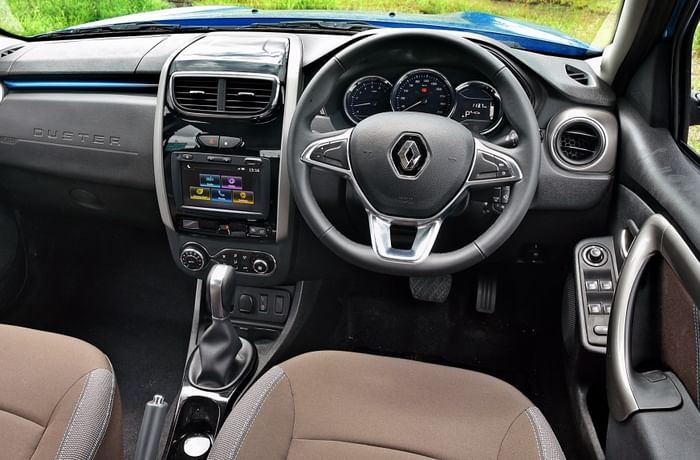
Does the 2020 Duster Turbo get new features?
Apart from new 17-inch alloys, an engine stop/start function, and a new remote pre-cooling feature, the Duster’s equipment list is the same as the 2019 facelift; so it gets kit like automatic climate control, projector headlamps with LED DRLs, electric folding mirrors, cruise control, touchscreen with Android Auto and Apple CarPlay, reversing camera, cooled glovebox, driver armrest, ESP and hill-start assist, being the notable ones.
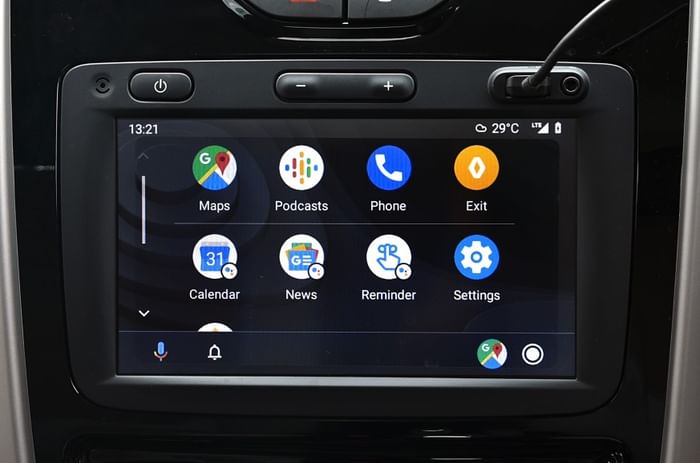
Equipment you’ll find on the competition that’s missing here, however, are things like automatic LED headlamps, an auto dimming inside mirror, rain-sensing wipers, a sunroof, rear AC vents, keyless entry and go, side and curtain airbags, cooled seats, rear disc brakes, and air purifier and wireless smartphone charging.
Should you buy the 2020 Duster Turbo?
So, the Duster Turbo isn’t the quickest around and that’s shame given its power credentials. However, it’s still a lot of fun and the performance is a massive step-up compared to the naturally aspirated petrol engine. In fact, this force-fed motor is strong, refined and feels zippy enough to occupy the middle ground between the NA petrol engine and the now-discontinued diesel engine.
Though Renault has spruced up the Turbo’s exteriors with red accents and sportier alloys to differentiate it from the NA petrol, the Duster’s interiors appear too dated, its equipment list is scant and it simply lacks the polish and sophistication of the Koreans. Also, when seen against its naturally aspirated sibling, which is available in the exact same trims, the roughly Rs 2 lakh premium for the Turbo is a lot, and the CVT automatic is even pricier, commanding a Rs 1.60 lakh premium over the manual.
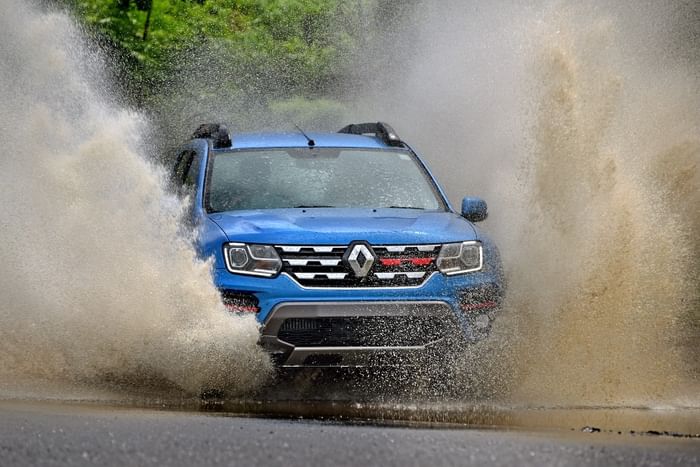
However, turbo-petrols don’t come cheap, and looking at the Koreans, whose turbo-petrol ranges start Rs 2.50-3.50 lakh higher than the top-spec Duster Turbo, the Renault comes across as a value-for-money proposition. So, if you’ve always loved the Duster’s tough construction, its ability to tackle bad roads, and its solid fundamentals, then this one with the turbo engine is something to look forward to.




























